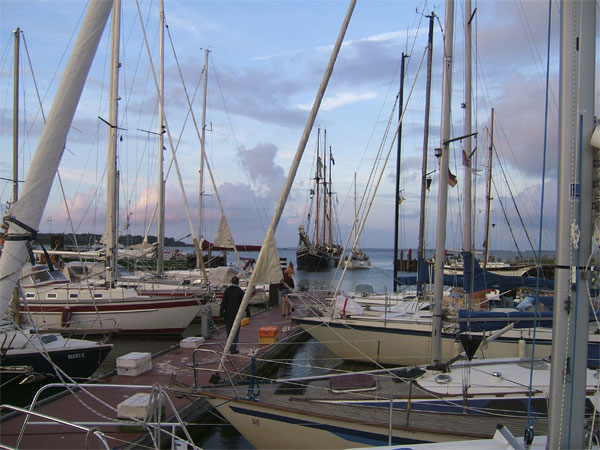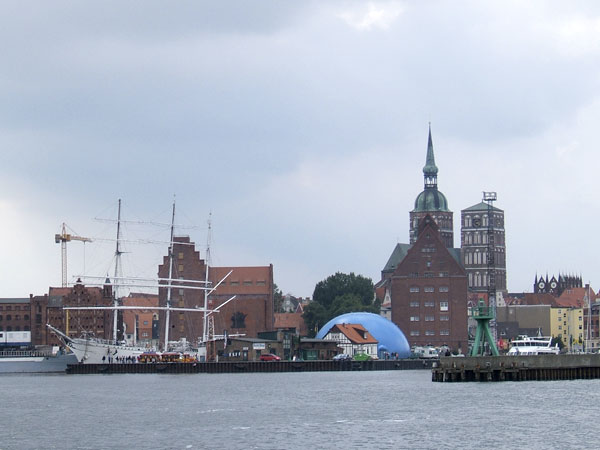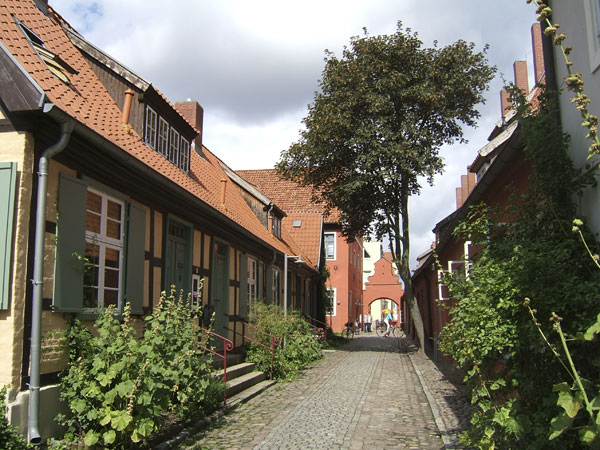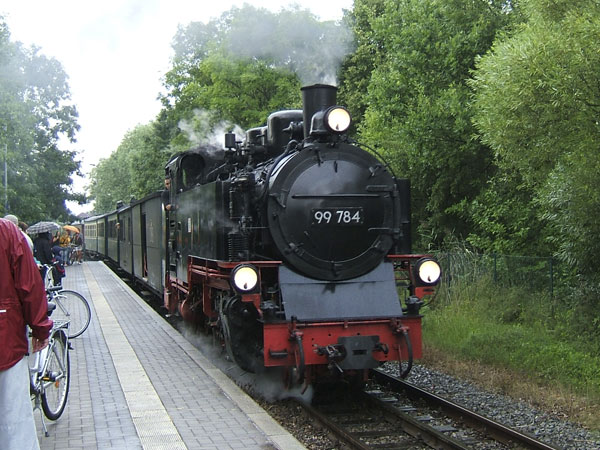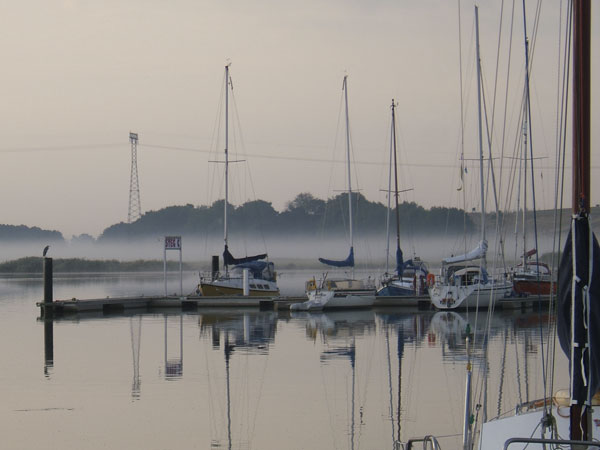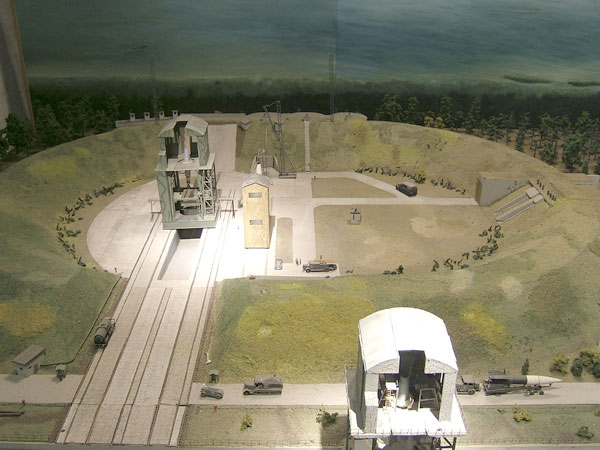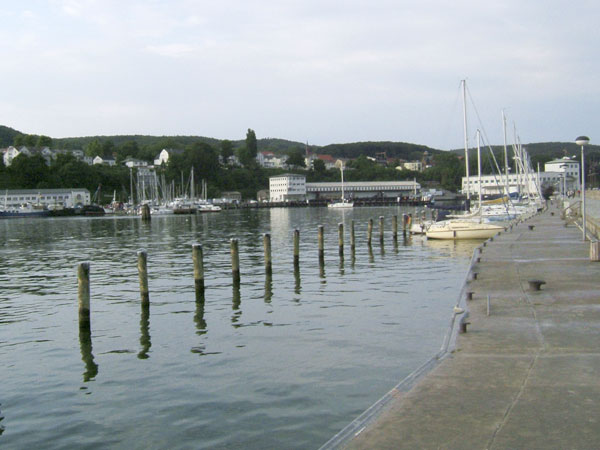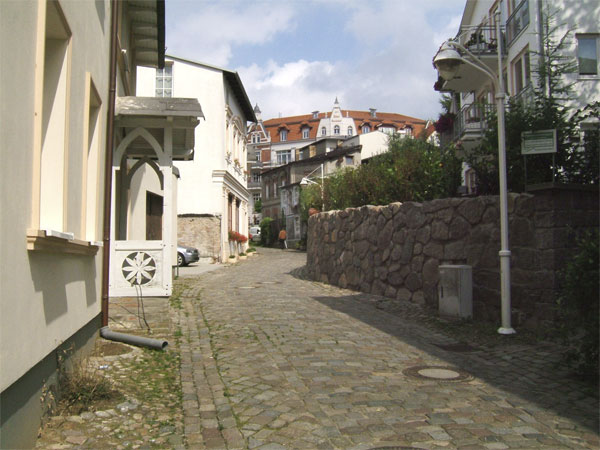
Rugen
Rügen is East Germany's holiday island. From the cliffs of Cap Ancona in the north, to the sandy beaches of the east, many locals make a rush for the island in summer. Because of the variety and comparatively sheltered waters, its also a popular sailing area, and a large charter fleet is based at Lauterbach. 'Round Rügen' trips are common.
Many of the waters are shallow (<2m) but the area is well buoyed, and its usually possible to drop the hook just off the fairway. In fine weather there are some glorious anchorages.
The bridge at Stralsund opens five times a day, but not between 09:20 and 17:20, so through passages need to be geared around this. There is however a large marina on the seaward side at Stralsund where you can spend the day waiting and exploring the interesting town.
One option we have not (yet) explored, is to travel past Peenemunde into Poland by the 'back route' via the Peenestrom and Stettiner Kleines Haff, and then back out into the Baltic at Swinoujscie. The countryside around Peenemünde is glorious, and its one 'to do' on our list.
The primary issue for yachts in traveling to the area from the west is that there is little shelter between Warnemunde and Stralsund (or rather Barhoft), a distance of about 50 miles. The only option is the nature harbour of Darsser Ort which breaks the 50 mile trip about half way. Unfortunately this has a habit of regularly silting up and is often closed. This summer (2006) it was open, although the bouys apparently didn't match the channel! If you get stuck there is a lifeboat which will come out and tow you in, but its not ideal in big weather. For somewhere apparently 'away from it all' its also in the middle of a national park and is subject to tourists who arrive by other means!
Barhoft
To get to Stralsund from the west entails following a narrow bouyed channel, the Gellen Strom. Just behind the lsland of Bock lies the tiny harbour of Barhöft. This friendly little place is right next to a country park and has footpaths leading to elevated vantage points. There is also a small beach. The harbour master speaks good English, and there is a small shop and (often) a fresh fish stall. The entrance channel is narrow, and the leading lights at first difficult to see, but is not difficult - just dont cut the corner!
Stralsund
The main town in the area is Stralsund, an old Hanseatic town. In a gorgeous setting with the Strelasund on one side, and ringed by lakes, its one of our favorites. From the sea, the first thing you see if coming from the west are the enormous old brick warehouses right on the quay. At night, town is floodlit and looks stunning.
Stralsund has probably the most spectacular Hanseatic town hall of all and the nearby main shopping drag has been tastefully refurbished.
There are a number of good restaurants in the Alter Markt, about 5-10 minutes walk from the marina past some stunning old buildings. However there are also a good number of decent restaurants actually around the harbour, particularly down by the Querkanal.
Hanseatic buildings are scattered all around Stralsund. Although some of the best are along the Fahrstraße, there are some interesting ones surrounding the Heilgleistkloster, behind a church which used to be a Leper hospital.
There are a number of marinas, but the one most people pick is the Stadthafen, immediately to starboard once inside the harbour walls. This marina usually has room, but has finger pontoons quite close together and somewhat exposed to the swell. (we actually got hit in Stralsund by a motor boat backing out of the pontoon opposite and not looking behind him).
There are boards on the end of the pontoons showing which arms are suitable for which sizes of boats. Electricity is by pre-paid charge card which you get from the marina office, and there is Wi-Fi (see Lan 1 for prices). The shower facilities are on a floating barge and are not huge for the size of marina. An alternative, if you can squeeze in, is the Querkanal. There are a few berths here, or you can lay along the wall. Access is via a lifting bridge which opens a few times a day, but it is extremely sheltered and you are then right by a bunch of good restaurants.
The nearest decent supermarket is a significant walk out of town, although there is a small one just off the main shopping drag if you are desperate. If you want a major shop, pick somewhere else or hire a taxi.
Lauterbach, Putbus & Vilm
In the northern part of Greifswalder Bodden lies the small port of Lauterbach. There is an easily entered harbour with a few visitors moorings, and, just next door, a large marina. The harbour is often full and the marina houses a large charter fleet, (look out for idiots) but usually has space.
The town is largely non-existent, consisting of a couple of reasonable hotel/restaurants opposite the quay, although a few hundred yards towards Putbus lies a sizeable supermarket if you need stores.
About a mile and a half away lies the architectural experiment of Putbus. Built by a (mad) German Count in 1833, the most famous part is the celebrated 'circus' along with its associated Theatre. Admittedly we saw it on a wet wednesday, but for us, the park opposite was much the more interesting attraction. The park used to be the gardens of a grand schloss, although the schloss got pulled down by the locals in the 1960s in a forlorn bid to impress the head of the GDR.
Putbus is also the headquarters of the Rasender Roland, (Racing Roland), a celebrated narrow gauge railway that runs across Rügen to Göhren. The railway actually terminates down at Lauterbach harbour and so its possible to get the train between the two towns - it runs about every two hours.
Just offshore from Lauterbach, and accessible only by special tourist boat is the bird sanctuary island of Vilm. One of the reasons the island is unspoilt is that it was kept as a secret holiday hideway for the upper echelons of the GDR political class - no riff-raff allowed here.
Peenemünde/Kröslin
Peenemünde has a fascination for the British as it is where the Nazis designed and tested the V1 and V2. Part of the site is now a museum and styles itself as the 'birthplace of space travel'. This is largely on the back of Werner von Braun, the chief designer of the V2 and ultimately behind the Saturn V rockets that got Neil Armstrong to the moon.
The way into Peenemünde is well buoyed but very shallow if coming from the west/north. A few yards outside the channel and you are into the sticky stuff.
The best place to stay is in the über-modern marina of Kröslin, just opposite Peenemünde. Built on the site of an old flying boat station, and reached by a dredged channel among the rushes, it is huge, and always has space (finger pontoons, green/red system). We liked the place so much we almost left the boat here for the winter (they have some large sheds) but its a long way from cheap air travel. There isn't much in the nearby village (a small shop and bakery) however the marina pasta restaurant is fine. There is a chandlers and good service centre. (Note that the water on the pontoons says 'not for drinking', but it lies..). There are also huge numbers of washing machines if you want to get some housework done. Although the marina is on the opposite side of the river from the museum, a ferry runs once an hour.
The museum is fascinating. Set in the old power station of the research site, and surrounded by old dormitory blocks slowly rotting amongst the weeds, there are a number of exhibits outside (mostly planes and bits of rocket), and then a comprehensive set over two floors inside covering the development of the V2. Its done with some sensitivity and includes a section on how prisoners of war were press ganged into building the things. (Its interesting that even to Germans, the Nazi's are always 'them'...). For my taste there could be a bit more on the actual technology, but then I'm a geek.
Although much of the museum is in English as well as German, its well worth purchasing the portable electronic guides. Around the harbour by the ferry are a number of other exhibits including a russian submarine. There is a small marina here belonging to the local yacht club. Its possible to moor, but slots are very limited.
As I have said elsewhere, the original research station was huge, covering the whole area for miles around, but not much is left now as it was trashed by the Russians when they left. The actual factory buildings were on the eastern coast, and the, now heavily overgrown, V2 launch site right up on the northern tip of the promontory. For students of history (aka Geeks like me) you could spend a week cycling round the area to get a sense of what went on.
The ferry actually operates a circular trip. On the way back to Kroslin it calls at Freest, a small fishing harbour with a decent beach.
Sassnitz
If approaching from the (north)east, then Sassnitz is the ideal stop. A quick 50 mile hop from Bornholm or Ystad (if coming from Sweden) it has a large bustling harbour. Although Sassnitz is a ferry port, the ferries now berth at a purpose built harbour some way south, so there are no hazards in getting in.
The best place to berth is to port on a purpose built (but now rather aging) jetty in boxes. This is right outside a number of restaurants. If this is full (it often is) there are a considerable number of berths (boxes) along the harbour wall opposite. (A rather long walk to the showers).
If even this is full, you can tie alongside any other staging not occupied by fishing boats. Although the harbour is sheltered, we found that that a swell enters in a southerly blow making the berths quite uncomfortable (almost dangerous - as the swell tends to be broadside onto the boat). No one else appears to have reported this phenomenon so it cannot be common.
Sassnitz appears to be the only harbour in Germany where the customs/immigration people are still accosting yachts. Whether because of the closeness to Poland, or whether a hangover from unification and 'jobs for the boys' we never found out, but they were efficient and courteous.
The town is also a 'day trip' destination for visitors to the island so expect plenty of bustle. The town itself is pleasant with a few shops (including an excellent patisserie) but there a couple of other attractions. The most famous are the woods, just north of the town. The Jasmund National Park is famous for its chalk cliffs and you can walk out to the Koenigsstuhl, although the best view of this is to seaward to the north of the town.
About seven miles south of the town, amid glorious sandy beaches that stretch for miles, lies the huge Nazi planned 'holiday spa' at Prora.
The most notable feature are the Nazi-architecure buildings, which stretch in an unbroken line for over two and a half miles (see a satellite photo of the complex here). Intended as a workers playhouse for 20,000 people, it was never used, and now lies gently rotting, only 150m from the beach.
